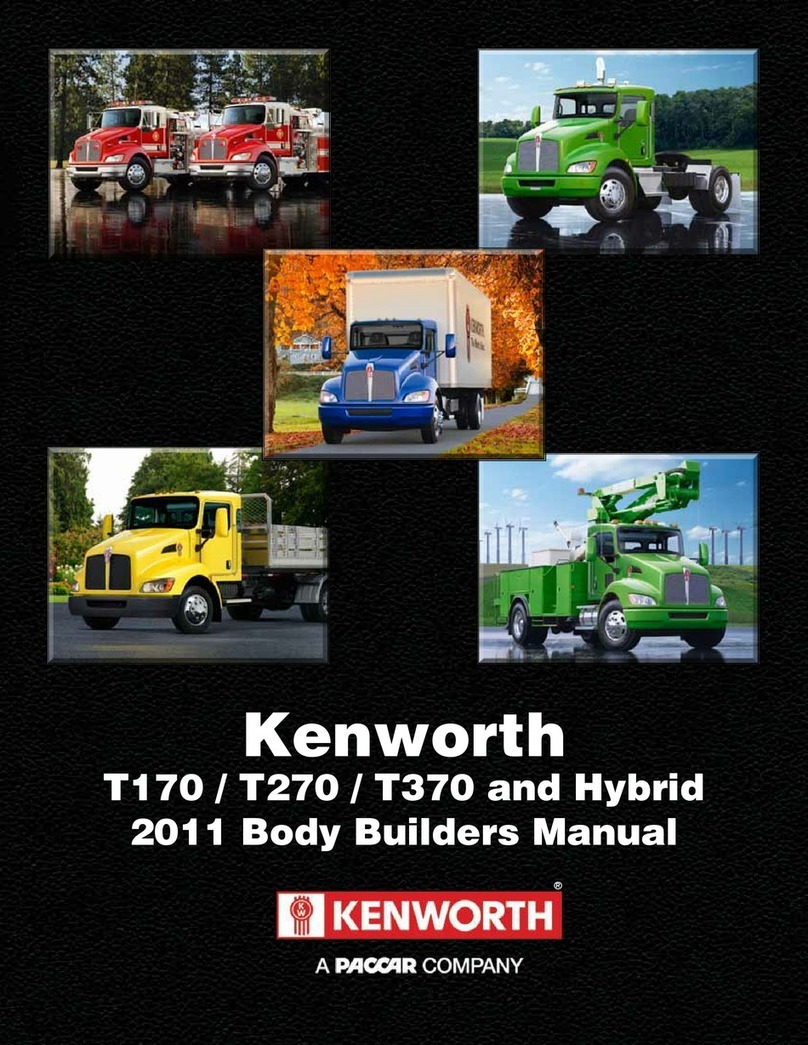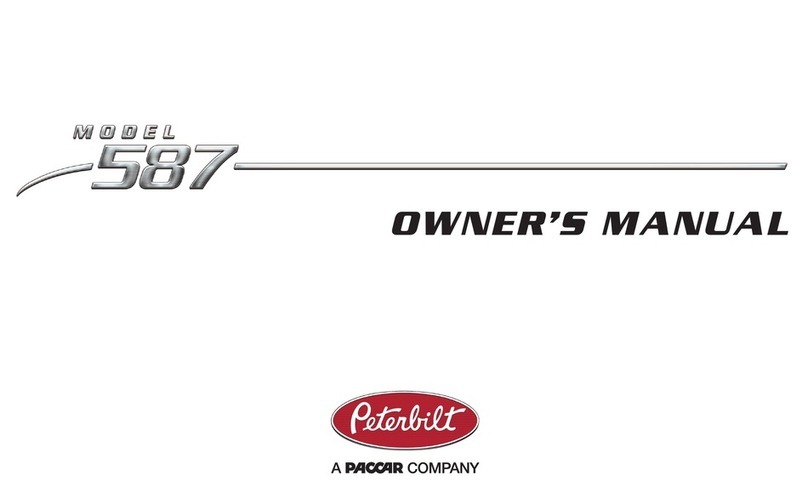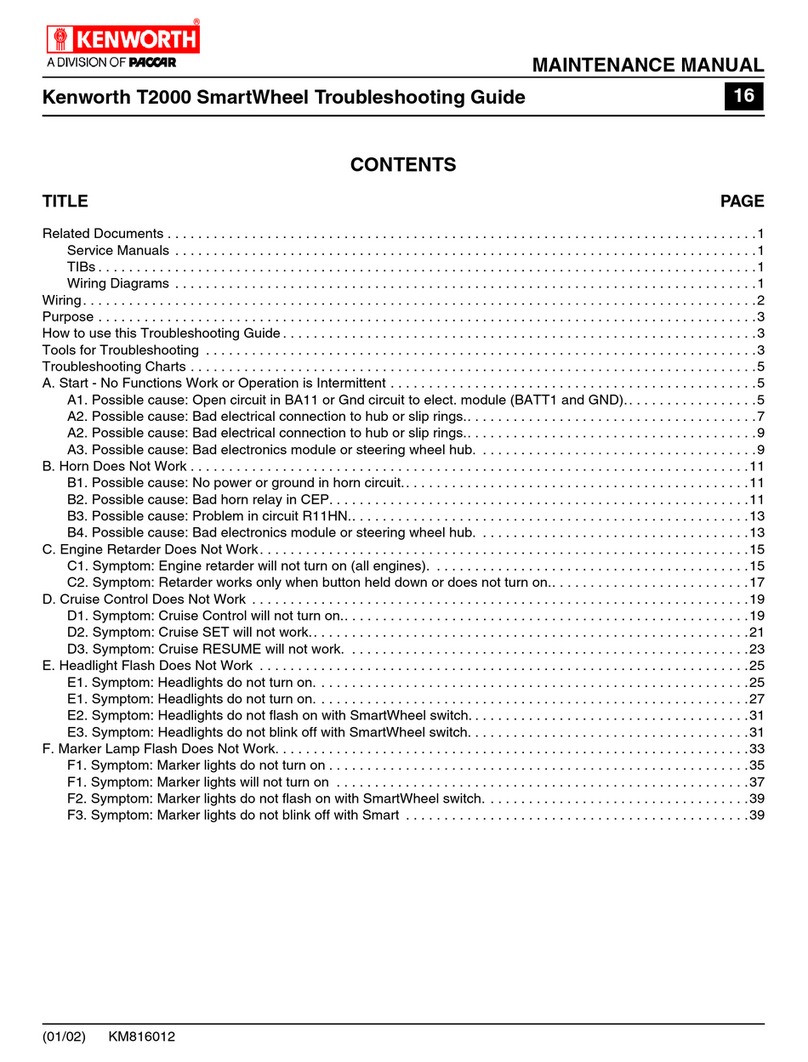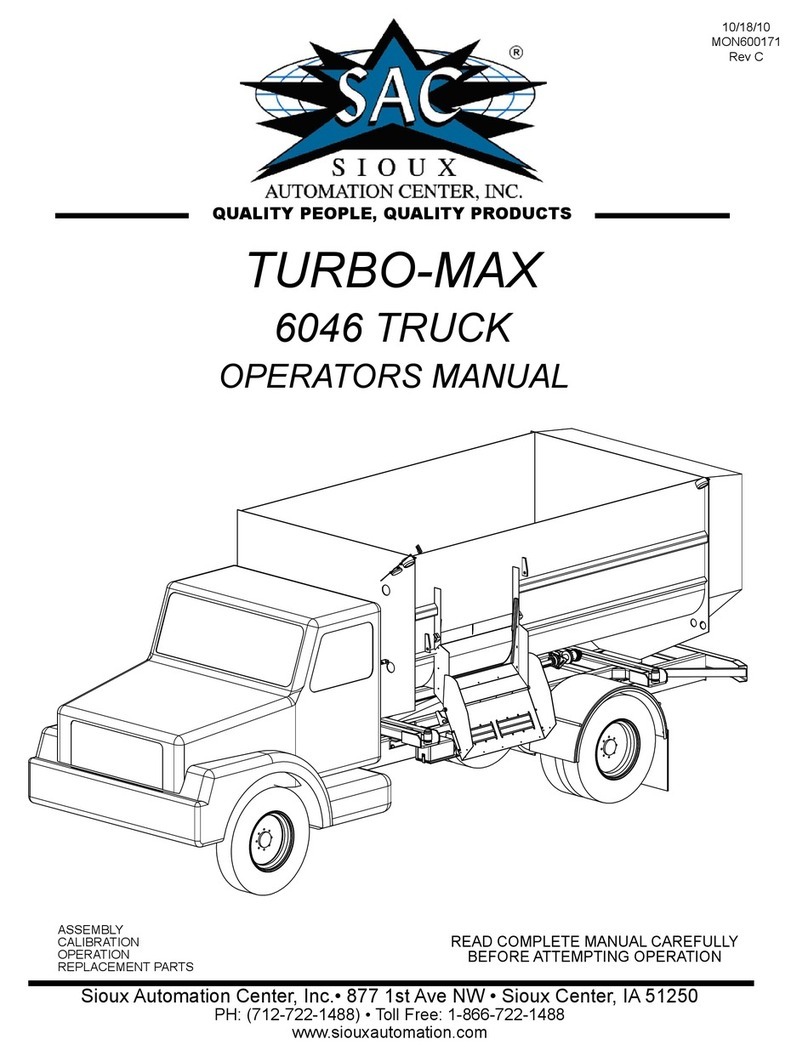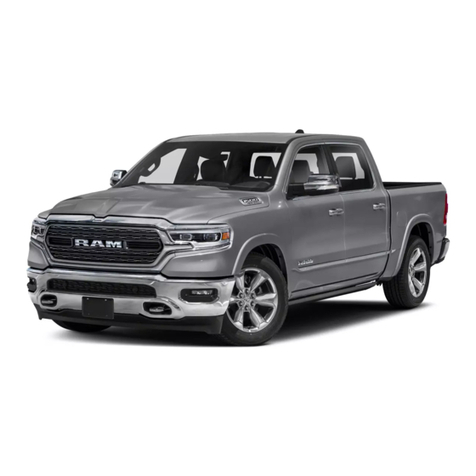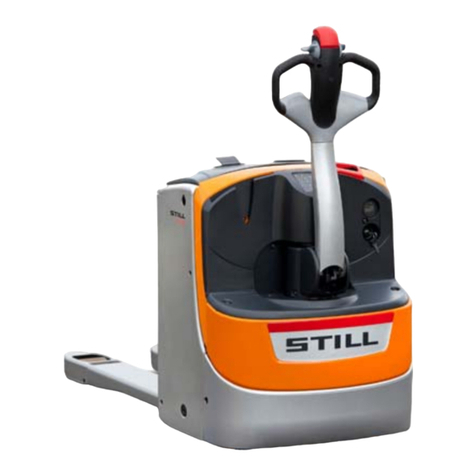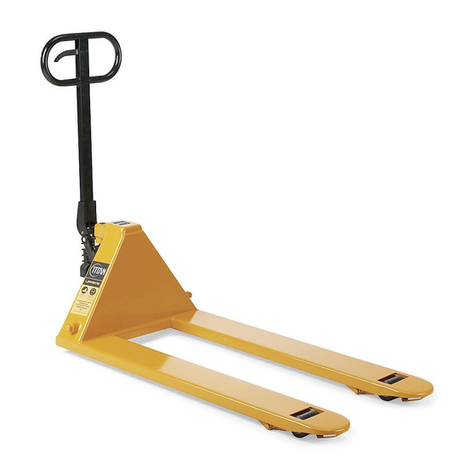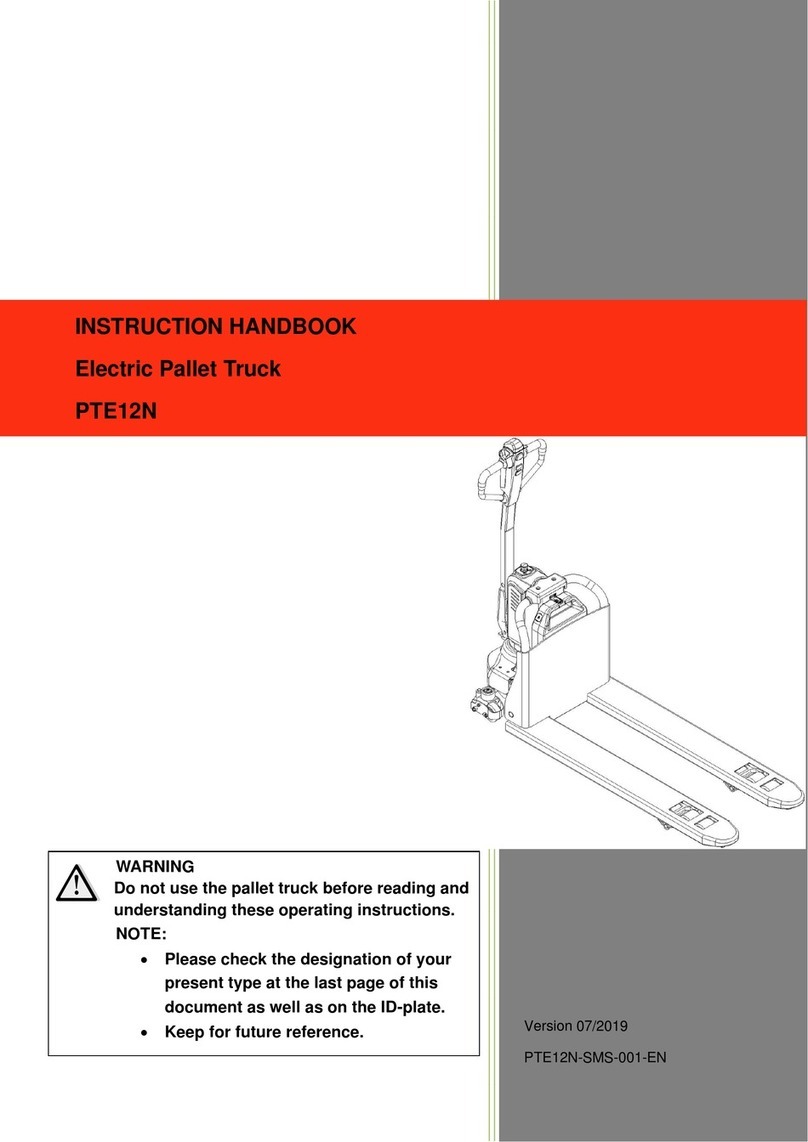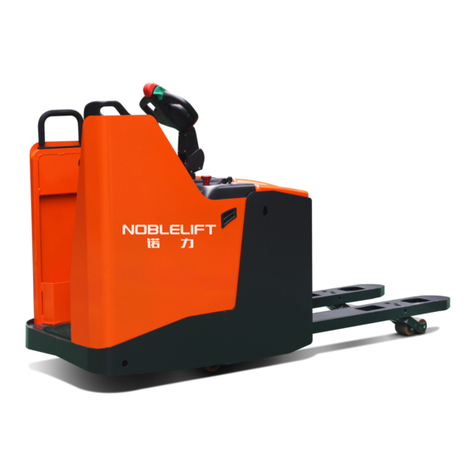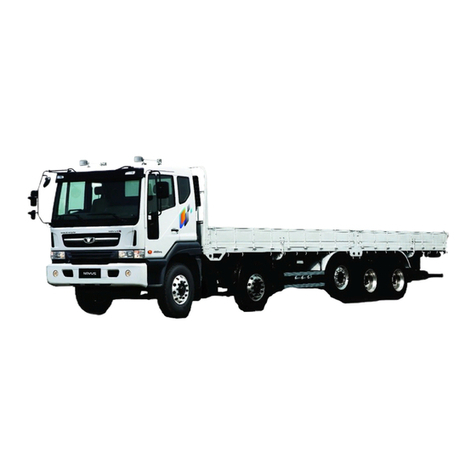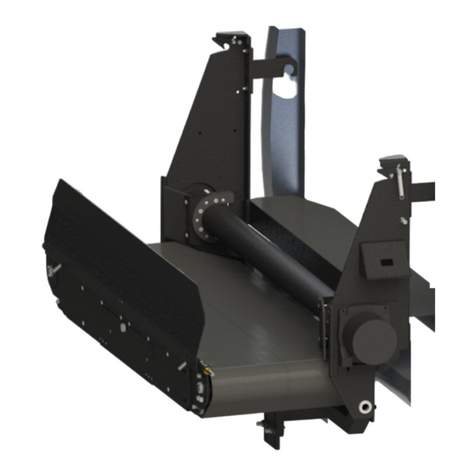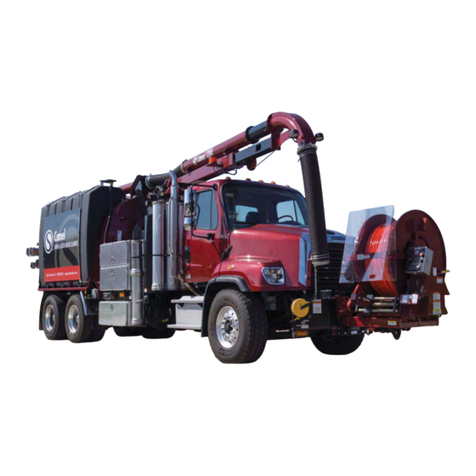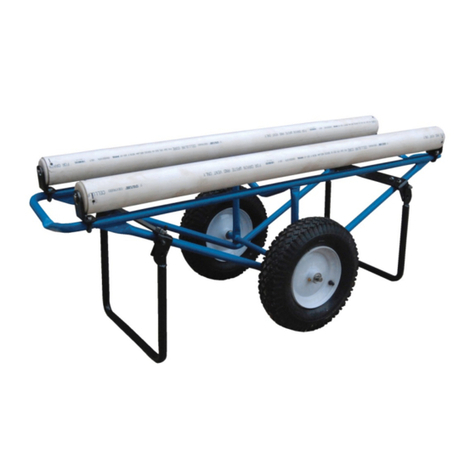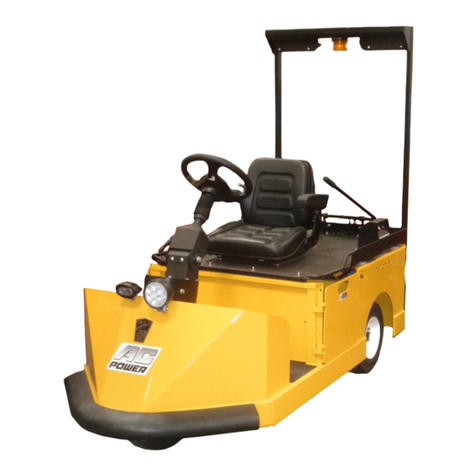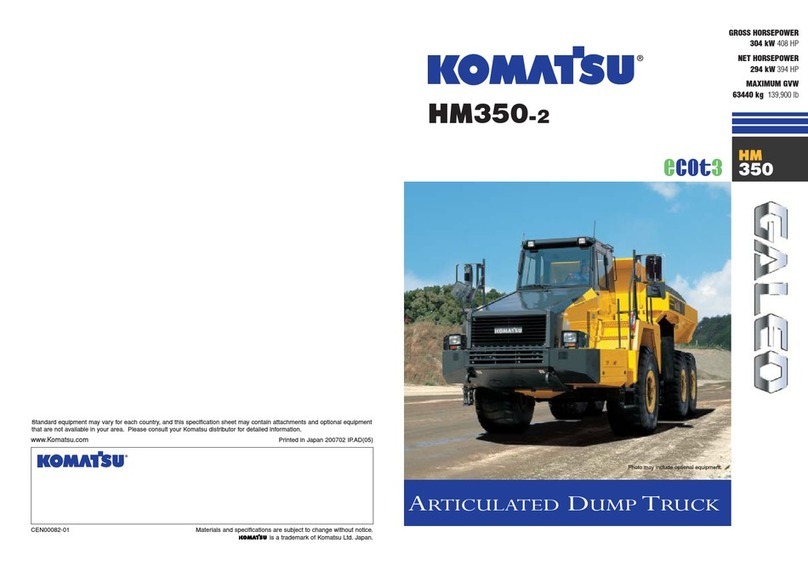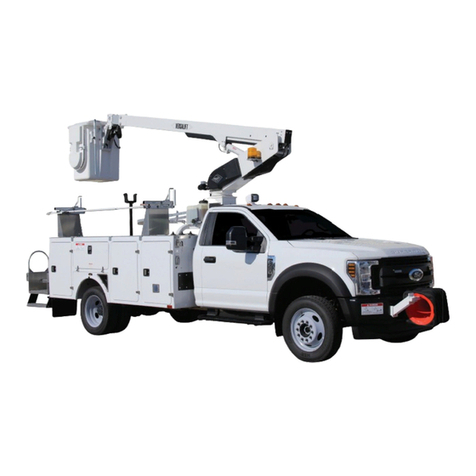
Additional Sources of Information PART 1: INTRODUCTION
So if you want information on brakes, for example, just look
under Brake in the Subject Index. You’ll find all the pages
listed where brakes or braking are discussed.
A Special Word About Repairs
Your Peterbilt dealer’s service center is the best place to
have your vehicle repaired. You can find Peterbilt dealers
all over the country with the equipment and trained person-
nel to get you back on the road quickly - and keep you there.
Your vehicle is a complex machine. Anyone attempting re-
pairs on it needs good mechanical training and the proper
tools. If you are sure you have these requirements, then
you can probably perform some repairs yourself. However,
all warranty repairs must be performed by an authorized
Peterbilt service facility. If you aren’t an experienced me-
chanic, or don’t have the right equipment, please leave all
repairs to an authorized service facility. They are the ones
equipped to do the job safely and correctly.
WARNING! Attempting repair work without suf-
ficient training, service manuals, and the proper
tools can be dangerous. You could be injured
or you could make your truck unsafe. Do only
those tasks you are fully qualified to do.
Maintenance Manuals. Ifyoudodecidetodoanycom-
plex repair work, you’ll need the Peterbilt Maintenance
manuals. Order them from your authorized dealer. Please
provide your Chassis Serial Number when you order, to be
sure you get the correct manuals for your vehicle. Allow
about four weeks for delivery. There will be a charge for
these manuals.
Final Chassis Bill of Material. A complete, nonillustrated
computer printout listing of the parts used to custom- build
your Peterbilt vehicle is available through the Peterbilt
dealer from whom your purchased your vehicle.
WARNING! Modifying your vehicle can make
it unsafe. Some modifications can affect your
truck’s electrical system, stability, or other
important functions. Before modifying your
vehicle, check with your dealer to make sure it
can be done safely.
Additional Sources of Information
Operator’s manuals are also supplied by the manufacturers
of components such as the engine, seats, transmission,
and radio in your Peterbilt. If you are missing any of these
manuals, ask your Peterbilt dealer to supply them.
– 2 – Y53-6015 R(08/07)



